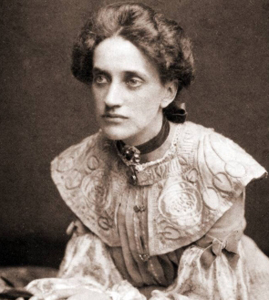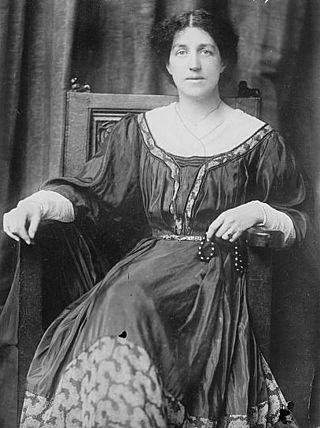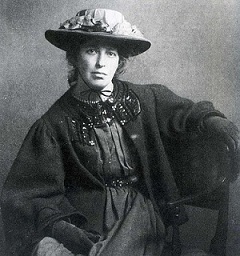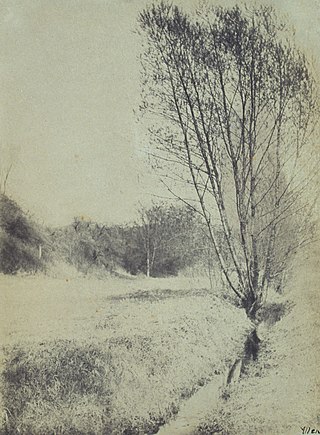
Assisi embroidery is a form of counted-thread embroidery based on an ancient Italian needlework tradition in which the background is filled with embroidery stitches and the main motifs are outlined but not stitched. The name is derived from the Italian town of Assisi where the modern form of the craft originated.

Blackwork, sometimes historically termed Spanish blackwork, is a form of embroidery generally worked in black thread, although other colours are also used on occasion, as in scarletwork, where the embroidery is worked in red thread. Most strongly associated with Tudor period England, blackwork typically, though not always, takes the form of a counted-thread embroidery, where the warp and weft yarns of a fabric are counted for the length of each stitch, producing uniform-length stitches and a precise pattern on an even-weave fabric. Blackwork may also take the form of free-stitch embroidery, where the yarns of a fabric are not counted while sewing.

The Royal School of Needlework (RSN) is a hand embroidery school in the United Kingdom, founded in 1872 and based at Hampton Court Palace since 1987.

Ann Macbeth was a British embroiderer, designer, teacher and author. She was a member of the Glasgow Movement where she was an associate of Margaret MacDonald and Charles Rennie Mackintosh, and many other 'Glasgow Girls'. She was also an active suffragette and designed banners for organisations supporting women’s suffrage, such as the Women’s Social and Political Union

Crewel embroidery, or crewelwork, is a type of surface embroidery using wool. A wide variety of different embroidery stitches are used to follow a design outline applied to the fabric. The technique is at least a thousand years old.

Historic Deerfield is a museum dedicated to the heritage and preservation of Deerfield, Massachusetts, and history of the Connecticut River Valley. Its historic houses, museums, and programs provide visitors with an understanding of New England's historic villages and countryside. It is located in the village of Old Deerfield which has been designated a National Historic Landmark District, and is listed on the National Register of Historic Places. The museum also hosts the Dublin Seminar for New England Folklife.

Mary "May" Morris was an English artisan, embroidery designer, jeweller, socialist, and editor. She was the younger daughter of the Pre-Raphaelite artist and designer William Morris and his wife and artists' model, Jane Morris.

English embroidery includes embroidery worked in England or by English people abroad from Anglo-Saxon times to the present day. The oldest surviving English embroideries include items from the early 10th century preserved in Durham Cathedral and the 11th century Bayeux Tapestry, if it was worked in England. The professional workshops of Medieval England created rich embroidery in metal thread and silk for ecclesiastical and secular uses. This style was called Opus Anglicanum or "English work", and was famous throughout Europe.

Jessie Newbery was a Scottish artist and embroiderer. She was one of the artists known as the Glasgow Girls. Newbery also created the Department of Embroidery at the Glasgow School of Art where she was able to establish needlework as a form of unique artistic design. She married the director of the Glasgow School of Art, Francis Newbery, in 1889.

Elizabeth Wardle (1834–1902) was an English embroiderer. In 1857 she married the silk dyer Thomas Wardle, a distant cousin. Thomas was later knighted for his services to the silk industry.

The Deerfield Society of Blue and White Needlework was founded in Deerfield, Massachusetts, in 1896 by Margaret C. Whiting and Ellen Miller. They formed the society in 1896 as a way to help residents boost the town's economy by reviving American needlework from the 1700s. It was inspired by the crewel embroidery of 18th-century women who had lived in the Deerfield, Massachusetts, area. Members of the Blue and White Society initially used the patterns and stitches from these earlier works, but because these new embroideries were not meant to replicate the earlier works, the embroidery soon deviated from the original versions with new patterns and stitches, and even the use of linen, rather than wool, thread. The society disbanded in 1926 for several reasons. Ellen Miller was in declining health; the trained stitchers were getting old and could not continue; Margaret C. Whiting's sight was fading; and, the design and quality of commercially produced items was increasing.

Mary Electa Allen (1858–1941) was an American photographer and co-founder of the Deerfield Society of Blue and White Needlework. She worked alongside her sister as a photographer from 1885 until 1920 capturing the life and landscape of Old Deerfield, among other subjects and paid commissions.
Lilian Margery Dring was a British artist known for her paintings, poster designs and textile designs. needlework and embroidery work.
Memorial Hall Museum is a museum dedicated to preserving the history, art, and culture of the Deerfield, Massachusetts region as well as New England generally. Overseen by the Pocumtuck Valley Memorial Association (PVMA), it opened in 1880.
Ellen Miller (1854-1929) was one of the founders of the Deerfield Society of Blue and White Needlework, with Margaret C. Whiting. She was a painter, designer, author, and needleworker. She was particularly skilled with dyeing, a talent she developed and practiced in her work for the Deerfield Society.
Inspired by the Arts and Crafts movement and the concept, organization, work and success of the Deerfield Society of Blue and White Needlework, citizens of Deerfield, Massachusetts began to create, show, and sell their craft and art works. Success in the 1899 Summer Exhibition in Deerfield, as well as two subsequent exhibitions, encouraged Madeline Yale Wynne, a founding member of the Chicago Arts and Crafts Society, to organize the Deerfield Society of Arts and Crafts in 1901, and to serve as its president. The Society changed its name in 1906 to the Society of Deerfield Industries.
Bed hangings or bed curtains are fabric panels that surround a bed; they were used from medieval times through to the 19th century. Bed hangings provided privacy when the master or great bed was in a public room, such as the parlor. They also kept warmth in, and were a way of showing one's wealth. When bedrooms became more common in the mid-1700s, the use of bed hangings diminished.
Winsome Douglas (1919-2016) was a British embroiderer and teacher active in the United Kingdom in the 1950s and 1960s. She was born in Hartlepool in County Durham in 1919, and died at the age of 97 on 28 December 2016 in Hartlepool.

Leek Embroidery Society was established in 1879 in Leek, Staffordshire. It was known for producing both domestic and ecclesiastical embroidery work, which was granted prestigious awards for its fineness and high quality. The Society also developed a form of embroidery using tussar silk and aimed to promote art embroidery and fine needlework which would be shown in many international exhibitions. The establishment of the Leek Embroidery Society also led to the founding of the Leek School of Art Embroidery.

Balochi needlework is a type of handicraft made by the Baloch people. It is considered a heritage art, has been recognized by UNESCO, and it sells internationally. The Baloch people are native to the Balochistan region of South and Western Asia, encompassing the countries of Pakistan, Iran, and Afghanistan.














